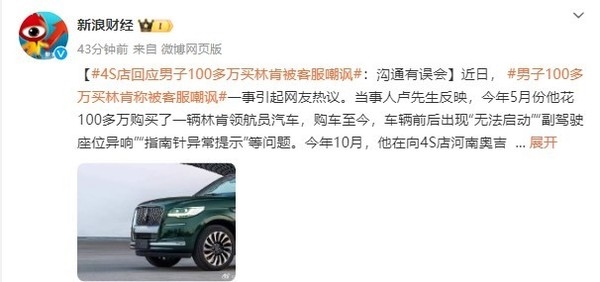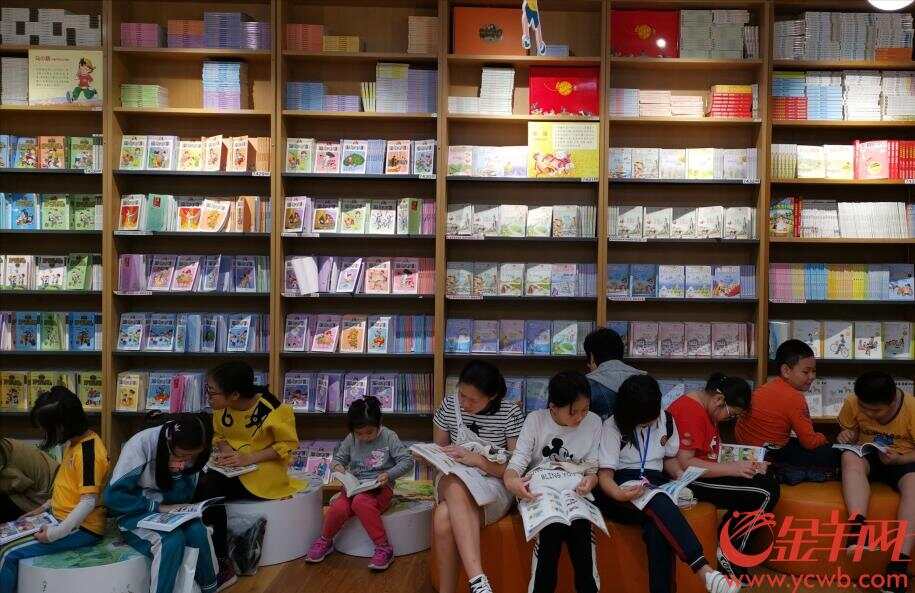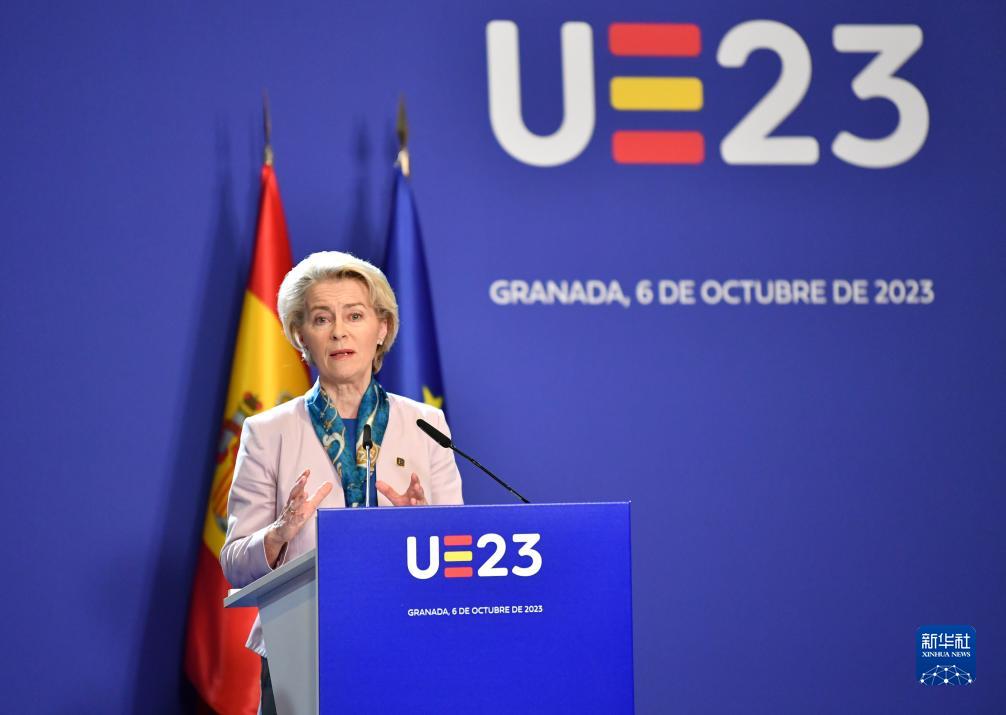CCTV News:According to the website of National Health Commission, in order to further guide all localities and departments to do a good job in the prevention and control of COVID-19 epidemic, according to the relevant requirements of novel coronavirus Prevention and Control Plan (9th Edition) and Notice on Further Optimizing the Prevention and Control Measures of COVID-19 Epidemic, the Comprehensive Group of the State Council Joint Prevention and Control Mechanism has formulated and issued the Implementation Measures for the Detection of Nucleic Acid in COVID-19 Epidemic Prevention and Control, the Delineation and Control Plan for the Risk Area of COVID-19 Epidemic, the Medical Observation Guide for the Home Isolation of COVID-19 Epidemic and the Home Health Monitoring Guide for the New Crown Pneumonia Epidemic.
Attached:
Measures for the implementation of nucleic acid detection for epidemic prevention and control in COVID-19
In order to guide all localities to carry out epidemic monitoring in COVID-19, implement the requirements of early detection and early reporting, and timely discover and dispose of the epidemic, these measures are formulated.
I. Normalization monitoring
In areas where no epidemic has occurred, nucleic acid testing shall be carried out for risk posts and key personnel in strict accordance with the scope determined by the novel coronavirus Prevention and Control Plan (Ninth Edition) (hereinafter referred to as the Ninth Edition Prevention and Control Plan), and the scope of nucleic acid testing shall not be expanded. Generally, nucleic acid testing shall not be carried out for all employees according to administrative regions.
(1) Examination of medical personnel.
Medical personnel of various medical institutions at all levels, especially primary medical and health institutions, should raise their awareness of finding and reporting COVID-19 cases, paying special attention to the following situations.
1. Strengthen the monitoring of symptoms such as fever, dry cough, fatigue, sore throat, hypoesthesia and diarrhea, and carry out Covid-19 nucleic acid detection for all patients with fever. Suspicious patients who have no fever but have symptoms such as dry cough, fatigue, sore throat, decreased sense of smell, diarrhea, etc., have a history of epidemiology in COVID-19, or are engaged in risk occupation personnel (see the following classification of risk occupation population) should carry out nucleic acid detection in time.
2. Carry out nucleic acid detection on cases of unexplained pneumonia and severe acute respiratory infection in hospitalized patients.
3. Carry out nucleic acid detection on all newly admitted patients and their accompanying staff. After suspicious patients are found in community health service stations, village clinics and individual clinics, they should report to community health service centers or township hospitals within 2 hours, and implement the nucleic acid detection strategy of "village report, township sampling and county detection", which can simultaneously carry out antigen detection and find the epidemic situation as soon as possible.
(2) Detection of occupational groups at risk.
Nucleic acid detection is carried out once a day for people who are in direct contact with entry personnel, articles and environment (such as passengers, cleaning and maintenance personnel of cross-border vehicles, porters of imported articles at ports, frontline personnel of customs and immigration management departments who are in direct contact with entry personnel and articles), staff in centralized isolation places, medical staff in designated medical institutions and fever clinics of general medical institutions.
For employees with dense working environment, frequent contacts and strong mobility (such as express delivery, take-away, hotel service, decoration and loading and unloading service, transportation service, supermarket and agricultural (gathering) trade market staff, etc.), port management service personnel and staff of other departments of general medical institutions except fever clinics, nucleic acid detection is carried out twice a week. After 1 case or more local epidemic occurs within the jurisdiction, the frequency of nucleic acid detection shall be encrypted according to the risk of epidemic spread or the requirements of local epidemic prevention and control.
(three) personnel testing in key institutions and places.
Schools, kindergartens, old-age care institutions, service institutions in the field of child welfare, psychiatric hospitals, training institutions and other key institutions, supervision places, production workshops, construction sites and other crowded places should do a good job in monitoring the symptoms of relevant personnel under normalization, and organize nucleic acid sampling according to local prevention and control needs. After 1 case or more local epidemic occurs within the jurisdiction, the whole staff should be organized to complete the nucleic acid detection in time, and then the nucleic acid detection can be carried out according to the detection results and the spread risk of the epidemic, according to the sampling ratio of at least 20% per day or the detection requirements of the jurisdiction.
(4) Community management crowd detection.
1 into the community management of COVID-19 discharged (cabin) infected people and their residents, in the third and seventh days after discharge (cabin) to carry out a nucleic acid test.
2. Carry out "five-day home health monitoring" for employees in high-risk posts who have finished closed-loop operations, and manage them with codes during the period. Conduct nucleic acid testing on the first, third and fifth days respectively, and don’t go out unless necessary.
3. Carry out "7-day home isolation medical observation" for the overflow personnel in high-risk areas, during which they are assigned code management and are not allowed to go out, and carry out nucleic acid detection on the first, third, fifth and seventh days of home isolation. The management period is from leaving the high-risk area to 7 days. After the investigation and discovery of the inflow place, the nucleic acid test should be carried out immediately for the overflow personnel, and then carried out at the required frequency; When the spill situation is found in the investigation, if the spill personnel have left the high-risk area for more than 7 days, it is not necessary to conduct home isolation after completing the nucleic acid detection immediately.
4. For those who spill in low-risk areas, complete nucleic acid detection twice within 3 days, with an interval of 24 hours.
5. For those exposed in epidemic-related places, nucleic acid detection shall be carried out on the first and third days after judgment.
6. Close contacts and entry personnel released from centralized isolation shall be tested for nucleic acid on the first and third days of home isolation respectively.
7. Other personnel who need investigation shall carry out nucleic acid detection and health monitoring according to the requirements of territorial prevention and control. After the risk personnel are found in the investigation or investigation, the nucleic acid test will be carried out immediately.
(5) Testing of drug purchasers.
After the occurrence of local epidemic, pharmacies in the jurisdiction should register the people who buy antipyretic, antiviral, antibiotic, cough and cold drugs with real names and push them to the streets (communities) in the jurisdiction, and urge users to carry out nucleic acid testing in time, and if necessary, carry out antigen testing first.
(6) Detection of cross-regional floating personnel.
In accordance with the principle of "voluntary, free, take and go, without restricting the flow", nucleic acid sampling points are set up in airports, railway stations, long-distance passenger stations, provincial service areas of expressways, ports and other places to provide "landing inspection" service for migrant workers across provinces and guide go on road trip personnel to take the initiative to carry out nucleic acid testing everywhere.
Passengers are required to take planes, high-speed trains, trains, inter-provincial long-distance passenger cars, inter-provincial passenger ships and other means of transportation with negative proof of nucleic acid test within 48 hours. People leaving the land border port city must hold a negative nucleic acid test certificate within 48 hours.
Check the health code and negative proof of nucleic acid test within 72 hours for people staying in hotels and entering tourist attractions.
Special people such as infants under 3 years old can be exempted from checking the negative certificate of nucleic acid test.
Second, regional nucleic acid detection
In the process of epidemic disposal, on the basis of epidemiological investigation, the range, frequency and sequence of the detection population are determined according to the size of the population in the epidemic area, whether the source of infection is clear, whether there is a risk of community transmission and whether the transmission chain is clear. If individual cases and asymptomatic infected persons have a low risk of transmission to their residence, workplace and activity area, and close contacts have been controlled in time, regional nucleic acid testing may not be carried out after judging that there is no risk of community transmission.
(1) provincial capital cities and cities with a population of over 10 million.
After the outbreak of the epidemic, after investigation, it is found that the transmission chain is unclear, there are many risk sites and risk personnel, and the risk personnel are highly mobile, and there is a risk of spread of the epidemic, all the people in the epidemic area will be tested once a day. After three consecutive nucleic acid tests without social infection, all the people will be tested once every three days, and all the people without social infection can be stopped.
In other areas where infected people have frequent activities and stay for a long time, a certain area can be designated to carry out full-time nucleic acid testing based on the flow survey. In principle, once a day to carry out full-time nucleic acid testing, three consecutive nucleic acid testing without social infection, you can stop full-time nucleic acid testing.
When an epidemic situation spreads widely in communities across regions, the command will be upgraded, and the provincial epidemic prevention and control mechanism will decide whether to carry out full-scale nucleic acid testing within the city.
(2) Ordinary cities.
After the outbreak of the epidemic, after investigation, it is found that the transmission chain is unclear, there are many risk sites and risk personnel, and the risk personnel are highly mobile, and there is a risk of spread of the epidemic, all the people in the urban area where the epidemic is located will be tested once a day. After three consecutive nucleic acid tests without social infection, all the people will be tested once every three days, and all the people without social infection can be stopped.
In areas outside the city, based on the flow survey, a certain area is designated to carry out all-staff nucleic acid testing. In principle, once a day to carry out full-time nucleic acid testing, three consecutive nucleic acid testing without social infection, you can stop full-time nucleic acid testing.
(3) Rural areas.
After the outbreak of the epidemic, it is found that the transmission chain is unclear, there are many risk sites and risk personnel, and the risk personnel are highly mobile, and there is a risk of spread of the epidemic. The natural villages involved in the epidemic, the location of the township government and the county where it is located, will carry out full-time nucleic acid testing once a day. After three consecutive nucleic acid tests without social infection, the full-time nucleic acid testing will be carried out once every three days. If there is no social infection, the full-time nucleic acid testing can be stopped.
When the epidemic spread to several towns and villages, based on the flow investigation and judgment, expand the scope to carry out all-staff nucleic acid testing. In principle, once a day to carry out full-time nucleic acid testing, three consecutive nucleic acid testing without social infection, you can stop full-time nucleic acid testing.
Annex 2
COVID-19Delineation and control scheme of pneumonia epidemic risk area
In order to guide all localities to divide the risk areas in the handling of the epidemic situation, effectively implement the relevant prevention and control measures in the risk areas, and minimize the impact of the epidemic situation on people’s production and life, this plan is formulated in accordance with the requirements of laws, regulations and documents such as the Law on the Prevention and Control of Infectious Diseases in People’s Republic of China (PRC), the Law on Basic Medical Care and Health Promotion in People’s Republic of China (PRC), the Emergency Regulations for Public Health Emergencies, and the Notice on Further Optimizing the Prevention and Control Measures for the Epidemic Situation in COVID-19, and combining with local experiences and practices.
First, scientifically define risk areas
Adhere to the principle of "prevention first, combination of prevention and control, scientific according to law, classification and classification", and realize the organic combination and rapid transformation of normalized accurate prevention and control and epidemic emergency response. Once a local epidemic occurs, the counties (cities, districts and banners) where the cases and asymptomatic infected people are located should be accurately divided into high-risk areas and low-risk areas as soon as possible, all forces should be coordinated, classified management measures should be implemented, the risk level and control measures should be updated dynamically in time according to the epidemic situation, and released to the public on their own initiative. In the process of handling the epidemic situation, if the spread risk of individual cases and asymptomatic infected persons to the place of residence, work place and activity area is low, and the close contacts have been controlled in time, the risk area may not be designated after judgment that there is no community spread risk; Counties (cities, districts and banners) that have not experienced local epidemics should earnestly implement various measures for the prevention and control of normalized epidemics, and there is no need to delimit risk areas.
(1) High-risk areas.
1. Classification criteria. In principle, the living places of infected people, as well as areas such as workplaces and activities with frequent activities and high risk of epidemic spread, are classified as high-risk areas. High-risk areas are generally defined by units and buildings. In the case that the risk of epidemic spread is not clear or there is widespread community spread, the scope of high-risk areas can be appropriately expanded. The scope of risk area can be dynamically adjusted according to the results of flow investigation and judgment.
2. Prevention and control measures. The implementation of the closure control measures, during which "never leave home, door-to-door service". If new infected persons are found during the containment period, the local joint prevention and control mechanism will organize risk judgment, and the containment time of the original containment area can be extended in whole or in part according to the requirements of "one area, one policy".
3. lift the standard. No new infections were found in the high-risk area for five consecutive days, and all the people in the high-risk area were negative after completing a round of nucleic acid screening on the fifth day, which was reduced to a low-risk area. High-risk areas that meet the conditions for unsealing should be unsealed in time.
(2) Low-risk areas.
Other areas of counties (cities, districts and banners) where high-risk areas are located are designated as low-risk areas. Implement "personal protection and avoid aggregation" and leave the city with a negative nucleic acid test certificate within 48 hours.
After all high-risk areas are removed, the counties (cities, districts and banners) will implement normalized prevention and control measures.
(three) the main considerations for the delineation of risk areas.
Delineation of high-risk areas and low-risk areas shall be carried out by the expert group organized by the prefecture-level epidemic prevention and control command department according to the spread risk of the epidemic, and the provincial joint prevention and control mechanism (leading group and command department) shall be commanded and given professional guidance and support. Specifically, the following factors can be comprehensively considered:
1 cases and asymptomatic infected people living conditions, living environment, natural barriers around the residence (roads, rivers, mountains and rivers, etc.).
2. Population protection, population gathering, cases and the frequency of contact between asymptomatic infected people and other personnel in the relevant areas.
3. The time and scope of work and activities of cases and asymptomatic infected persons, as well as the tightness and ventilation of relevant places.
4 after the discovery of the epidemic began to investigate the time interval, etc.
(four) confirmed cases and asymptomatic infected persons in the following circumstances are not included in the risk area determination.
1. Confirmed cases and asymptomatic infected persons found during centralized isolation medical observation have no risk of transmission outside the centralized isolation point after investigation and evaluation.
2. The confirmed cases and asymptomatic infected persons found during the observation of home isolation medicine have no risk of transmission outside the home after investigation and evaluation.
3. The confirmed cases and asymptomatic infected persons found during the strict closed-loop management of employees in high-risk positions have no risk of transmission by people outside the closed-loop after investigation and evaluation.
4. After discharge (cabin), those who are positive for nucleic acid detection have no risk of transmission after investigation and evaluation.
5. Ct value of nucleic acid detection ≥ 35, and was screened as a previously infected immigrant.
Two, clear working mechanism and division of responsibilities
The prevention and control of high-risk areas and low-risk areas shall be under the unified command of the prefecture-level epidemic prevention and control command department. Community prevention and control offices are set up in communities where high-risk areas are located, and generally there are working groups such as comprehensive coordination group, health monitoring group, medical security group, disinfection group, transshipment group, logistics security group, and security protection group to coordinate streets (towns), communities (villages), public security, health and wellness, disease control, development and reform, commerce, industry and informatization, housing and urban-rural construction, transportation, market supervision, group organization, and so on. The responsibilities of the working groups are as follows:
(1) Comprehensive coordination group. Mainly responsible for assisting the responsible comrades of the community prevention and control office to do a good job in overall planning and coordination, and do a good job in information collection and release, personnel investigation, and nucleic acid detection organization.
(2) Health monitoring group. Mainly responsible for residents’ health monitoring and health education.
(3) medical security group. Mainly responsible for providing medical services and psychological support, etc., and cooperating with the transfer of medical personnel who go out for medical treatment.
(4) disinfection group. Mainly responsible for disinfection and terminal disinfection of key parts and areas.
(5) transshipment group. Mainly responsible for the transfer of those who are positive for nucleic acid testing, those who have COVID-19-related symptoms, close contacts and those who go out for medical treatment.
(6) Logistics Support Group. Mainly responsible for the supply of living materials, garbage sorting and removal.
(7) security team. Mainly responsible for the patrol in the area, the management of bayonet closure, assisting personnel in the investigation, and organizing nucleic acid detection.
Third, implement community prevention and control measures by classification
(1) High-risk areas.
1. The area is closed. Arrange 24-hour patrol duty, strengthen management by installing monitoring equipment, electronic door magnets, etc., prevent people from going out and flowing, and strictly stay indoors. For those who really need to go out for medical treatment, they must be coordinated and arranged by the community prevention and control office, and a special car should be implemented to provide personal protection and implement closed-loop management.
If the high-risk area is located in the urban-rural junction or rural areas, the sanitary conditions are insufficient, the management is difficult, and there is a high risk of transmission. Residents in the area can be transported to centralized isolation places (if necessary, at most one person can be left in each household). At home, do a good job in environmental disinfection, room ventilation and other measures.
2. Publicity and guidance. Through WeChat, SMS, WeChat official account, small speakers, a letter and other means, timely release of the information and related arrangements. Guide residents to implement the requirements of personal protection and room ventilation. Pay close attention to and respond to residents’ demands in time to jointly create a good atmosphere for prevention and control.
3. Personnel touch the platoon. Through door-to-door visits, the establishment of WeChat groups, and checking the information of water meters and meters, we can find out the base number of all people in high-risk areas as soon as possible, and timely grasp the situation of elderly people living alone, minors, pregnant women, disabled people, people with mobility difficulties, hemodialysis patients, mental disorders, chronic diseases and other people. Timely grasp the situation of quarantined personnel who have not been transferred, implement special management and strict control, and strictly implement prevention and control measures such as staying at home, door-to-door sampling and health monitoring before transfer.
4. Health monitoring. Health monitoring shall be carried out for all personnel in high-risk areas, and the daily zero report system shall be implemented. Carry out temperature test and symptom inquiry once every morning and afternoon, understand the use of antipyretic, cough and cold, antibiotics, antiviral and other drugs by all personnel, and fill in the "Top Ten Symptoms" health monitoring registration form. If symptoms such as fever, dry cough, fatigue, sore throat, decreased sense of smell (taste), nasal congestion, runny nose, conjunctivitis, myalgia and diarrhea are found, the health monitoring group will immediately report and arrange home nucleic acid detection.
5. Nucleic acid detection. Carry out three consecutive tests in the first three days after the implementation of the closure control, complete two full-time nucleic acid tests on the first and third days, and carry out one antigen test on the second day. The frequency of subsequent tests can be determined according to the test results; Within 24 hours before the deregulation, the whole staff should be tested for nucleic acid once. When carrying out nucleic acid detection, it is necessary to set up sampling points reasonably and enable them after being evaluated by professionals; Scientifically determine the route, strengthen on-site organization and management, implement special guidance, time-sharing and zoning, and fix the route, and urge personal protection to prevent cross-infection. For buildings and courtyards where positive infected people have been found, antigen testing can be carried out first, and then nucleic acid testing can be carried out in an orderly manner after negative. Special personnel, such as risk personnel who have not been transported, those who are positive for antigen detection and nucleic acid mixed tube, patients with mobility difficulties and the elderly, should be sampled at home and single sampling and single inspection should be carried out.
6. Personnel transfer. If the personnel in the high-risk area are judged as close contacts, they will be transported to the centralized isolation place within 8 hours. Those who are found to be positive for nucleic acid test will be transported to designated medical institutions within 2 hours. Relevant personnel should strengthen local control before transshipment, and strengthen the personal protection of transshipment personnel and staff during transshipment.
7. Environmental disinfection and monitoring. Strengthen the disinfection of key areas and key parts, and disinfect key areas such as van elevators (corridors) and key parts such as elevator buttons, stair handrails and unit door handles that people frequently contact. Carry out terminal disinfection in time and evaluate the disinfection effect of cases and asymptomatic infected persons in places such as residence, work and activities. Strengthen disinfection personnel training, technical guidance and supervision and evaluation.
8. Garbage sorting and removal. Standardize the setting of temporary collection points for domestic waste and medical waste. Garbage generated by those who are positive for nucleic acid testing and close contacts and protective articles used by staff shall be treated with reference to medical waste. Other garbage can be treated as "other related domestic garbage" according to the requirements of "disinfection first and double bagging" after unified collection, so as to achieve "daily production and daily cleaning" and keep the environment clean and hygienic.
9. Living materials and medical security. Deploy forces, make it clear that the special team is responsible for the supply of basic living materials for residents, and do a good job in demand collection, help purchase and delivery to households. The local epidemic prevention and control command department should coordinate the development and reform, commerce, public security, transportation and other departments, smooth the transportation channels, promote the security supply units and large supermarkets to strengthen the docking with the community, and timely distribute relevant materials; It is necessary to designate specialized medical institutions to provide medical services for residents in high-risk areas, promote the establishment of a docking mechanism between communities and specialized medical institutions, and provide medical convenience for elderly people living alone, minors, pregnant women, disabled people, people with mobility difficulties, hemodialysis patients, mental disorders and patients with chronic diseases.
10. Psychological assistance and social work services. Inform people in high-risk areas of the telephone number of psychological assistance hotline, provide psychological support, psychological counseling and other services, alleviate negative emotions, prevent and alleviate psychological distress caused by the epidemic, and prevent extreme events caused by psychological pressure. When people in high-risk areas are found to have mental health problems, they will be referred to their counterparts’ mental health medical institutions in time.
(2) Low-risk areas.
1. Strengthen social control. All kinds of personnel in the area shall carry out nucleic acid testing as required, and try to reduce going out, not gathering and not getting together during the period, and do personal protection when going out; Strictly implement measures such as booking, peak shifting, current limiting, temperature measurement, registration and wearing masks when entering indoor public places.
2. Personnel investigation and control. After receiving the information on the investigation of the overflow personnel in the high-risk area, the investigation of the risk personnel should be completed within 24 hours, and the personnel management, health monitoring, nucleic acid detection, personnel transfer and other work should be coordinated; For those who cannot be investigated, timely feedback should be given to form a closed loop of investigation.
3. Traffic control. People in low-risk areas advocate not to leave the area unless necessary, and cross-city mobility must hold a negative nucleic acid test certificate within 48 hours. Vehicles and personnel who transport production, living, medical protection materials and engage in "point-to-point" transshipment of road transportation shall be guaranteed to pass smoothly on the basis of strictly implementing various prevention and control measures such as disinfection and closed management. Strengthen the control of traffic checkpoints in railway stations, airports, highways, waterways and other access areas, and do a good job in temperature measurement, verification and code inspection.
4. Nucleic acid detection. According to the risk assessment results of epidemic spread and the management of risk personnel, scientifically determine the population range and frequency of nucleic acid testing in low-risk areas. When carrying out nucleic acid detection, sampling points will be set up nearby and will be activated after being evaluated by professionals; Strengthen on-site organization and management, carry out in an orderly manner, avoid gathering, and urge personal protection.
5. Health education. Strengthen health education, remind residents to reduce going out, avoid gathering, keep social distance and do personal protection. After symptoms such as fever, dry cough, fatigue, sore throat, decreased sense of smell (smell), stuffy nose, runny nose, conjunctivitis, myalgia and diarrhea, they should take the initiative to go to medical institutions in time. Do a good job in propaganda and guidance of prevention and control policies, so that residents can actively cooperate with the investigation of risk personnel.
See attached table for delineation and control measures of high and low risk areas.
Fourth, strengthen organizational guarantee
(1) Improve the working system.
Establish a "three-level guarantee" system, give full play to the role of grassroots party organizations, and implement county (city, district) cadres to cover streets (towns), township (street) cadres to cover communities (villages) and administrative villages (communities) cadres to cover households. Establish a "five-package one" system, and refine the division of responsibilities. Street (township) cadres, community grid administrators, grassroots medical workers, police, volunteers, etc. are jointly responsible for implementing community prevention and control measures, so as to achieve "five in place" of education, investigation, control, supervision and care. Establish a multi-sectoral communication and consultation mechanism, strengthen communication and coordination between the community and local health, disease control, public security and other joint prevention and control related units, and form a joint force for epidemic prevention and control. Hospitals and disease control institutions should give full play to their professional advantages and provide support for the community to do a good job in personnel control, health monitoring, nucleic acid detection, personnel transfer, cleaning and disinfection.
(2) Reasonable staffing.
Counties (cities, districts), streets (townships) and communities (villages) should be equipped with prevention and control personnel and medical prevention and control materials according to the needs of local community size and epidemic prevention and control work. County (city, district) and above epidemic prevention and control command departments should make overall arrangements for prevention and control personnel in high-risk areas. In principle, staff in high-risk areas should be equipped according to the proportion of not less than one tenth of the number of residents, and cadres of relevant units in provinces and cities can sink to each working group to carry out their work.
(3) Do a good job in training drills.
Strengthen staff training, so that they can fully grasp the knowledge, policies and personal protection skills of prevention and control in COVID-19, define the work requirements, and scientifically and accurately implement various prevention and control measures. After the issuance of this plan, all localities should strengthen training drills, improve the working mechanism in time, and master the prevention and control measures and requirements in different risk areas.
(4) Strengthening staff management.
Staff should do a good job in the corresponding level of protection according to the exposure risk specification, and complete the whole vaccination of Covid-19 vaccine before taking up their posts. Staff in high-risk areas should be managed in a closed way during their work, and they should do a good job in health monitoring and maintain a certain frequency of nucleic acid detection, and conduct home health monitoring for 5 days after work.
(five) to strengthen the protection of living materials.
The epidemic prevention and control headquarters at or above the county (city, district) level shall, jointly with relevant parties, establish a cross-regional cooperation mechanism for joint supply and protection of materials, with the development and reform, commerce, transportation and other departments taking the lead, responsible for the overall planning, procurement, allocation and transportation of materials, supporting relevant enterprises to play the role of supporting the bottom, strictly enforcing the law, stabilizing prices, and doing a good job in docking with community prevention and control offices, unblocking green channels, and fully ensuring the supply of living materials for residents.
(6) Actively create "epidemic-free communities".
Adhere to scientific and precise requirements, implement various prevention and control measures with high standards, timely and dynamically adjust the corresponding prevention and control measures for those who have not had an epidemic and meet the lifting standards, fully mobilize the enthusiasm of community residents to participate in and cooperate with prevention and control work, enhance the confidence and determination of cadres and the masses to overcome the epidemic, restore normal production and living order in time, and make overall plans for epidemic prevention and control and economic and social development.
(7) Do a good job in supervision and inspection.
All localities should strengthen the supervision and inspection of community prevention and control work, and the county (city, district) and above party committees and governments should organize a supervision team to establish a daily supervision and inspection mechanism and regularly report the inspection and rectification. For counties (cities, districts) where the epidemic occurs, they can take the form of stationing supervision in relevant key areas to urge the local authorities to effectively implement various prevention and control measures.
Annex 3
Medical observation guide for home isolation of epidemic situation in COVID-19
I. Management object
Including special people among close contacts, close contacts and entry personnel after lifting centralized isolation, overflow personnel in high-risk areas and other personnel who cannot be subjected to centralized isolation medical observation after professional evaluation.
Second, the site requirements
(a) home isolation medical observers had better live alone; If conditions do not allow, choose a well-ventilated room in the house as an isolation room and remain relatively independent.
(2) Put tables and stools outside the relatively independent isolation room as the junction of non-contact transfer items.
(3) When the room is ventilated by air conditioning system, split air conditioning should be selected. If central air conditioning is used, the air conditioning can operate normally, the fresh air volume should be increased, and the return air should be closed by the whole air system.
(four) if conditions permit, try to use a separate bathroom and avoid sharing the bathroom with other family members.
(five) the room should be equipped with personal protective equipment such as thermometers, paper towels, masks, disposable gloves, disinfectants, disinfection products and garbage cans with covers.
Third, the management requirements
(1) community service requirements.
1. register. Street (town), community (village) staff should get in touch with home isolation medical observers in time, master the information of home isolation medical observers, check whether the living place meets the conditions of home isolation medical observation, issue a notice of home isolation medical observation (see Annex 1), inform the relevant requirements of home isolation medical observation, and register in accordance with the requirements of "one file for one household" or "one file for one person" and incorporate it into community grid management. Master the situation of special personnel in home isolation medical observation, such as elderly people living alone in empty nests, patients with basic diseases, pregnant women, hemodialysis patients, etc., establish a ledger, and do a good job in necessary life support and care services.
2. Monitoring information collection. Streets (towns) and communities (villages) can regularly inquire and collect the temperature, symptoms and other information of medical observation personnel in home isolation twice a day in the morning and evening. If anyone with fever, dry cough, fatigue, sore throat, decreased sense of smell, diarrhea and other symptoms is found, report it immediately, and contact 120 negative pressure ambulance by a special person and send it to a fever clinic or designated medical institution according to the principle of proximity.
3. Nucleic acid detection. The nucleic acid detection during the observation period of home isolation medicine is collected by community sampling personnel at home, and the results of nucleic acid detection are pushed in time.
4. Environmental cleaning and garbage disposal. Disinfect the walkways, stairs and other places on the floor where medical observers live in isolation at home once a day, clean up the garbage at least once, and clean it up in time if necessary.
5. Psychological assistance and social work service requirements. Inform home medical observers of the telephone number of psychological assistance hotline, provide psychological support, psychological counseling and other services, alleviate the negative emotions of isolated personnel, prevent and alleviate the psychological distress caused by the epidemic, and prevent extreme events caused by psychological pressure. When mental health problems are found in home isolation medical observers, they should be referred to their counterparts’ mental health medical institutions in time.
6. Spot check regularly. The community should regularly carry out spot checks on the observers who are implementing home isolation medicine within their jurisdiction to find out whether they are conducting home isolation medicine observation as required, whether they leave their residence, whether they participate in gathering activities, and whether they complete nucleic acid detection and other activities on time.
7. Staff protection. When the community medical observation management personnel are in contact with the isolated medical observers at home, they should do a good job of self-protection when dealing with their pollutants and the surfaces of contaminated objects, and wear disposable working caps, medical surgical masks, work clothes and disposable gloves, keeping a distance of more than 1 meter from them. N95/KN95 particulate matter protective mask should be worn when transporting positive infected persons, handling infected persons’ pollutants and polluting the surface of objects, or being in close contact with isolators due to other work.
(2) Self-management requirements for medical observers in home isolation.
1. Health monitoring. Home-isolated medical observers should take temperature measurement and self-health monitoring once every morning and evening, and report the monitoring results to the community medical observation management personnel. During medical observation, if there are symptoms such as fever, dry cough, fatigue, sore throat, decreased sense of smell (taste), diarrhea, etc., the community management personnel shall promptly report to the local health administrative department and the disease control institutions under their jurisdiction.
2. No going out. During the period of home isolation, the code management is assigned, and the home isolation personnel strictly do not go out and refuse all visits. For those who really need to go out for medical treatment, they can go out only after being approved by the local community medical observation and management personnel, and arrange a special car to do personal protection and implement closed-loop management.
3. Personal protection. Non-single residents, their daily life and meals should be confined to the isolation room as far as possible, and other people should not enter the isolation room. You don’t need to wear a mask when you are in the isolation room, and you should wear a mask when you leave the isolation room. Try to reduce contact with other family members, keep a distance of more than 1 meter when contacting, and wear medical surgical masks regularly. If the home isolation medical observer is a nursing mother, she can continue to breastfeed her baby on the basis of personal protection.
4. Nucleic acid detection and antigen self-test. Home isolation medical observers should cooperate with the staff to complete nucleic acid detection, antigen self-test and report the results according to the relevant prevention and control requirements.
5. Health and epidemic prevention requirements.
(1) Keep the home ventilated, try to open the doors and windows for ventilation every day, and use mechanical ventilation such as exhaust fans for those that cannot be naturally ventilated.
(2) Do a good job in ventilation and disinfection of shared areas such as toilets and bathrooms.
(3) Wash hands or disinfect hands when preparing food, defecating before and after meals, taking off masks, etc. When wiping your hands, you’d better use disposable tissue.
(4) Pay attention to cough etiquette. Cover your mouth and nose with paper towels when coughing or sneezing or cover your mouth and nose with the inside of your elbow. Throw the used paper towels into the trash can. Wash your hands or disinfect your hands immediately if you contact respiratory secretions.
(5) Do not share daily necessities with other family members, and the tableware should be cleaned and disinfected after use. Tableware is preferably boiled and disinfected for 15 minutes, or it can be soaked in chlorine-containing disinfectant solution containing 250 mg/L ~ 500 mg/L effective chlorine for 15 minutes and then washed with clear water.
(6) The surfaces of the table top, door handle, telephone, switch, hot water kettle, washbasin, toilet and other items that may be used in daily contact shall be wiped with chlorine-containing disinfectant containing 250 mg/L ~ 500 mg/L of available chlorine, and then washed with clear water at least once a day. Wet mopping the floor with chlorine-containing disinfectant containing 250 mg/L ~ 500 mg/L of available chlorine every day.
(7) When towels, clothes, quilts, etc. of medical observers in home isolation need to be cleaned, they should be placed separately and soaked in chlorine-containing disinfectant containing 250 mg/L ~ 500 mg/L of available chlorine for 30 minutes, or boiled for 15 minutes for disinfection and then rinsed with clear water.
(8) If the family shares the toilet, the home isolation medical observer shall disinfect the toilet once every time he uses it; If medical observers in home isolation use a separate toilet, the toilet can be disinfected once a day. The urinal and its surroundings can be wiped and disinfected with chlorine-containing disinfectant containing available chlorine 2000mg/L for 30 minutes. Toilet door handles, faucets and other parts that are often touched by hands can be wiped and disinfected with chlorine-containing disinfectant containing 500mg/L of available chlorine or other disinfectants that can be used for surface disinfection, and cleaned with water after 30 minutes.
(9) The used paper towels, masks, disposable gloves and other domestic garbage are put into plastic bags, placed in special garbage bins, and cleaned every day. Before cleaning, they are sprayed with chlorine-containing disinfectant containing 500 mg/L ~ 1000 mg/L of available chlorine or 75% alcohol until they are completely wet, then the plastic bags are tied tightly and discarded together with other domestic garbage.
(10) Disinfect the articles contaminated by saliva, sputum, etc. at any time. When disinfecting, wipe them with chlorine-containing disinfectant containing 500 mg/L ~ 1000 mg/L of available chlorine, 75% alcohol or other disinfectants that can be used for surface disinfection, and clean them with water after 30 minutes. A large number of pollutants should be completely covered with disposable absorbent materials (dry towels), and then a sufficient amount of chlorine-containing disinfectant containing 5000 mg/L ~ 10000 mg/L of available chlorine should be poured on the absorbent materials for disinfection, and the effect should be more than 30 minutes, and it should be carefully removed. Then wipe (mop) the contaminated surface and its surrounding 2 square meters with chlorine-containing disinfectant containing 500 mg/L ~ 1000 mg/L of available chlorine. Gloves and masks should be worn when handling pollutants, and you should bathe and change clothes after handling.
6. The medical observation of home isolation was lifted. After the expiration of home isolation medical observation, those whose nucleic acid test results are negative and have no abnormal symptoms can be released from home isolation medical observation after verification by the community and receipt of the notice of release of home isolation medical observation (see Table 2).
(3) Requirements of co-residents or accompanying personnel.
1. When the accompanying personnel are in contact with medical observers who are isolated at home, they should do a good job of self-protection when dealing with their pollutants and contaminated surfaces, and wear disposable working caps, medical surgical masks, work clothes and disposable gloves, keeping a distance of more than 1 meter from them.
2. After any direct contact with medical observers at home or leaving their living space, clean and disinfect their hands before and after meals, before wearing gloves and after taking off gloves.
3. People with basic diseases and the elderly can’t be chaperones of children, pregnant women, semi-self-care and self-care disabled people.
4. Co-residents or accompanying personnel shall abide by the management requirements of home isolation medical observation.
(4) Transfer of personnel after centralized isolation.
The community timely receives the relevant information of the person who needs to be isolated at home, such as name, gender, age, current address, contact telephone number, ID number, health status (whether there are basic diseases, mental illness, medication situation, whether there are children, elderly people who need to be accompanied, patients who are unable to take care of themselves, pregnant women, etc.), etc., and transfers them to the home isolation place in a peer-to-peer closed loop. The corresponding transfer vehicles and personnel should be guaranteed, and relevant training should be done well. Take corresponding protective measures during transshipment.
Fourth, the security requirements
(1) organizational guarantee. In the community where the home isolation medical observer is located, a special person shall be appointed to undertake the work of community medical observation management and sampling service, with clear responsibilities, the 24-hour duty system shall be implemented, and problems shall be found and solved in time.
(2) Guarantee of living materials. Establish a demand list during the period of home isolation, clarify the special strength of living materials supply, optimize terminal distribution, and get through the "last meter" of distribution.
(3) Protection of materials. The community should reserve enough protective materials (including masks, medical gloves, medical protective clothing, medical protective goggles, etc.), disinfection facilities and medicines.
(4) medical service guarantee. The community should establish direct hotlines with pharmacies and medical institutions, and do a good job in connecting services to meet the needs of residents for medication and medical treatment. Implement the responsibility system for the first diagnosis and the emergency rescue system, and do not shirk and refuse the diagnosis for any reason.
Annex 4
Guidelines for home health monitoring of epidemic situation in COVID-19
First, the applicable object
Employees in high-risk posts who have finished closed-loop operation, discharged (cabin) personnel infected with COVID-19 and other personnel who need to be monitored for home health after professional evaluation.
Second, the site requirements
(1) Choose to live in a well-ventilated room and try to remain relatively independent.
(2) If conditions permit, try to use a separate bathroom and avoid sharing the bathroom with other family members.
(three) the room should be equipped with personal protective equipment such as thermometers, paper towels, medical protective masks, disposable gloves, disinfectants, and disinfection products and garbage cans with covers.
Third, the management requirements
(1) community service requirements.
1. register. Street (town) and community (village) staff should strengthen the arrangement and information registration, grasp the information of people returning to the home health monitoring in time, get in touch with the home health monitoring personnel in time, verify the information, inform the relevant requirements of home health monitoring by issuing a home health monitoring notice (see the attached table), and register in accordance with the requirements of "one household for one file" or "one person for one file" and incorporate it into the community grid management. Master the situation of special personnel in home health monitoring, such as elderly people living alone in empty nests, patients with basic diseases, pregnant women, hemodialysis patients, etc., establish a ledger, and do a good job in necessary life support and care services. Streets (towns) and communities (villages) can strengthen the education and guidance of home health monitoring through notification, a letter and WeChat, reminding the community that home health monitoring personnel should take the initiative to get in touch with the community, report in time, and urge them to do a good job of home health monitoring as required.
2. Monitoring information collection. Streets (towns) and communities (villages) can regularly inquire and collect the temperature, symptoms and other information of home health monitors twice a day in the morning and evening by establishing WeChat groups and small programs. If anyone with symptoms such as fever, dry cough, fatigue, sore throat, decreased sense of smell, diarrhea, etc. is found, they should report it immediately, and a special person should contact 120 negative pressure ambulance and be sent to a fever clinic or a designated medical institution for medical treatment according to the principle of proximity.
(2) Management requirements for home health monitoring personnel.
1. Health monitoring. Personnel who carry out home health monitoring measure their body temperature once every morning and evening, do a good job in symptom monitoring, and report to the community (village) truthfully. If there are symptoms such as fever, dry cough, fatigue, sore throat, decreased sense of smell, diarrhea, etc., you should immediately inform the community workers and cooperate with them to go to medical institutions for treatment, and truthfully inform the medical staff of their epidemiological history when they see a doctor.
2. restrictions on going out. During the period of home health monitoring, I should strictly implement not going out unless necessary, and do personal protection when going out under special circumstances such as medical treatment, and wear N95/KN95 particulate matter protective mask to avoid taking public transportation.
3. Nucleic acid detection. Home health monitoring personnel should cooperate to complete nucleic acid detection according to the prevention and control requirements.
4. Health and epidemic prevention requirements.
(1) Keep the home ventilated and try to open the doors and windows for ventilation every day.
(2) Do a good job in cleaning the home environment, and regularly ventilate and disinfect the shared areas such as toilets and bathrooms; Regularly disinfect the surfaces of daily high-frequency contact items such as door handles, mobile phones and switches.
(3) Do a good job in hand hygiene, pay attention to cough etiquette, cover your mouth and nose with paper towels when coughing or sneezing, or cover your mouth and nose with the inside of your elbow, throw the used paper towels into the trash can, and wash your hands or disinfect your hands immediately if you contact respiratory secretions.
(4) Try not to share daily necessities with other family members, avoid close contact with family members, and advocate separate meals when eating.
Fourth, the security requirements
(1) organizational guarantee. Streets (towns) and communities (villages) should organize special personnel to be responsible for the management of home health monitoring personnel, clarify their responsibilities, implement the 24-hour duty system, find problems in time and solve problems in time. Establish an information sharing mechanism and regularly report the management of home health monitoring personnel.
(2) material security. The community should reserve enough protective materials (including masks, medical gloves, medical protective clothing, etc.), nucleic acid testing and sampling materials and disinfection materials.
(3) Psychological assistance and social work services. Inform home health monitoring personnel of the telephone number of psychological assistance hotline, provide psychological support, psychological counseling and other services, alleviate negative emotions, prevent and alleviate psychological distress caused by the epidemic, and prevent extreme events caused by psychological pressure. When mental health problems are found in home health monitors, they will be referred to their counterparts’ mental health medical institutions in time.





















